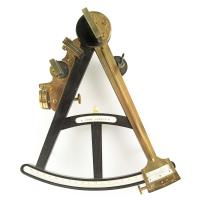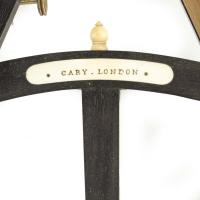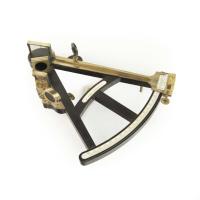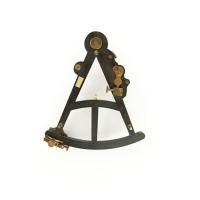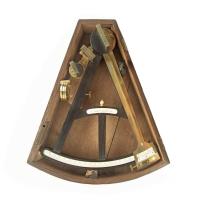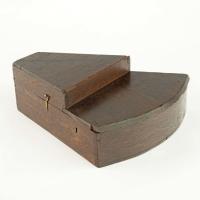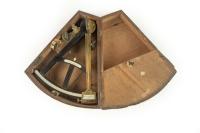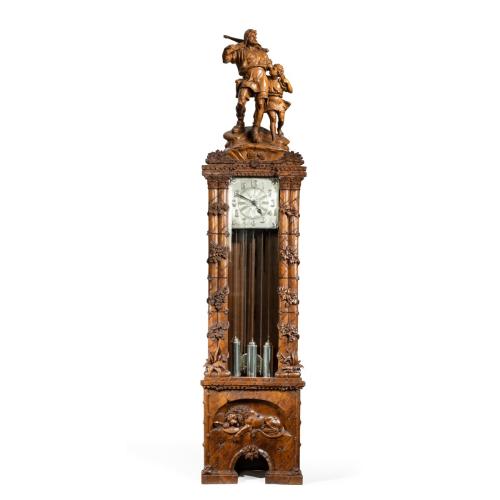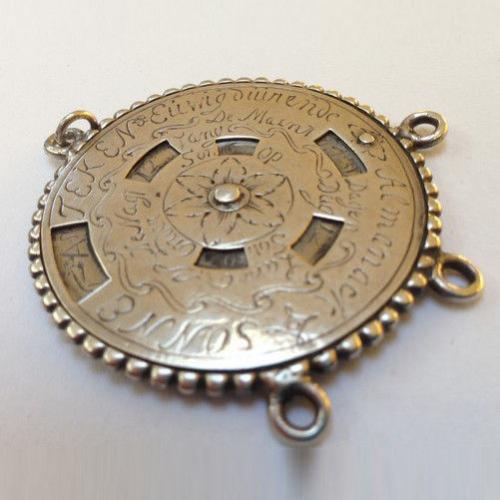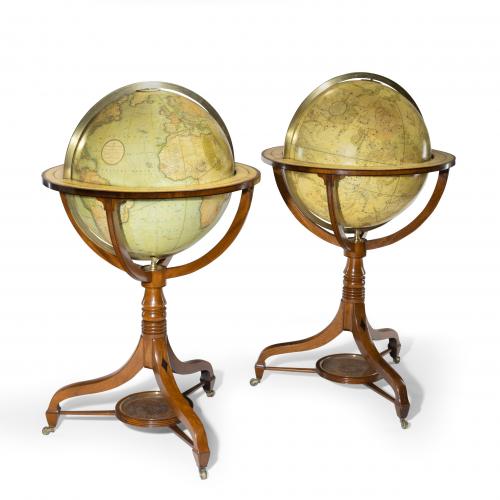
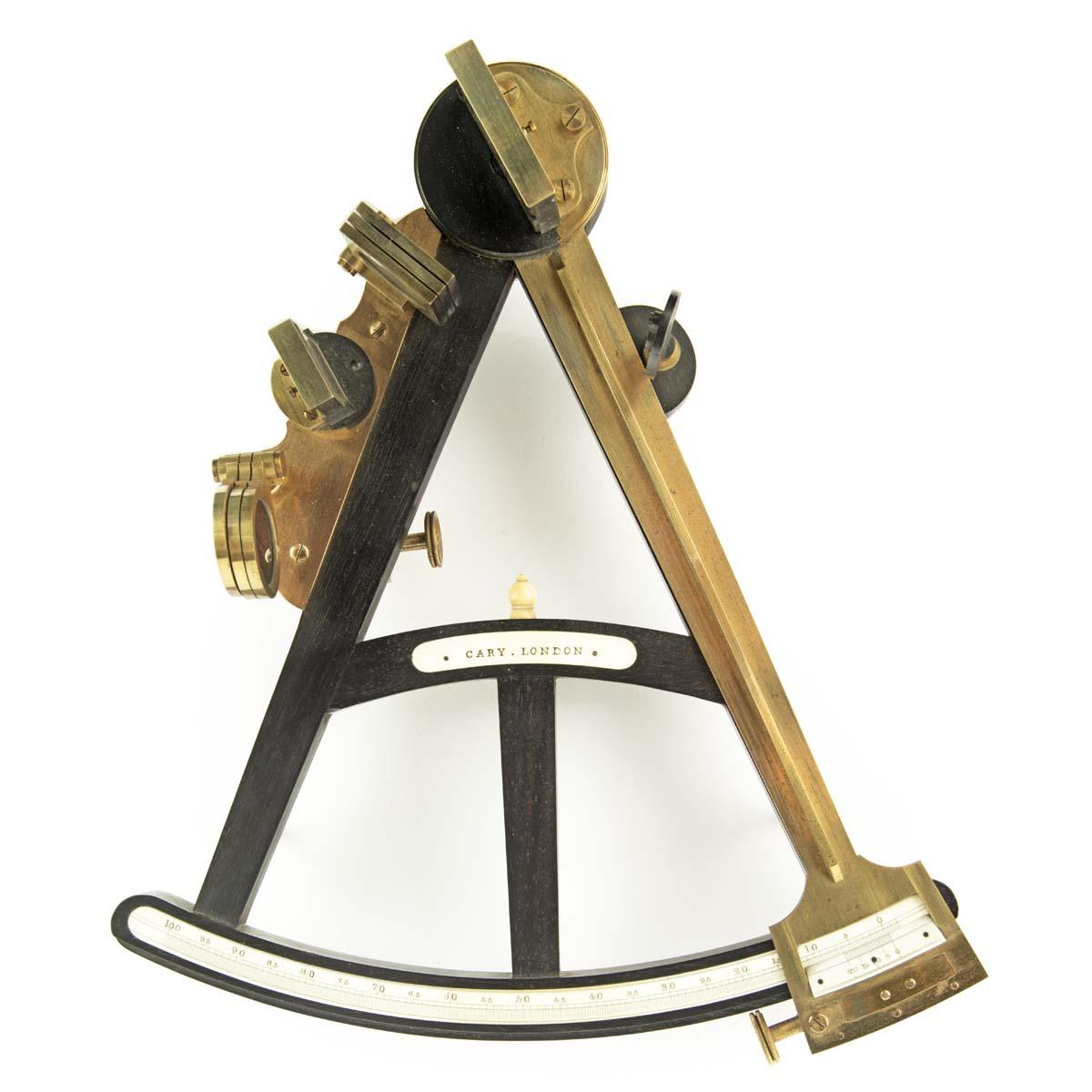
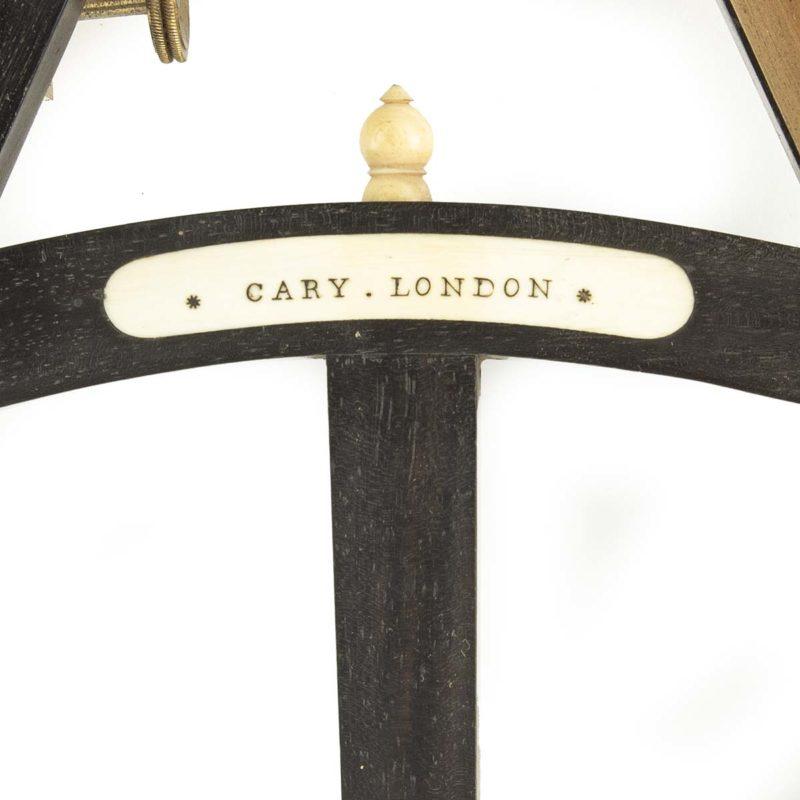
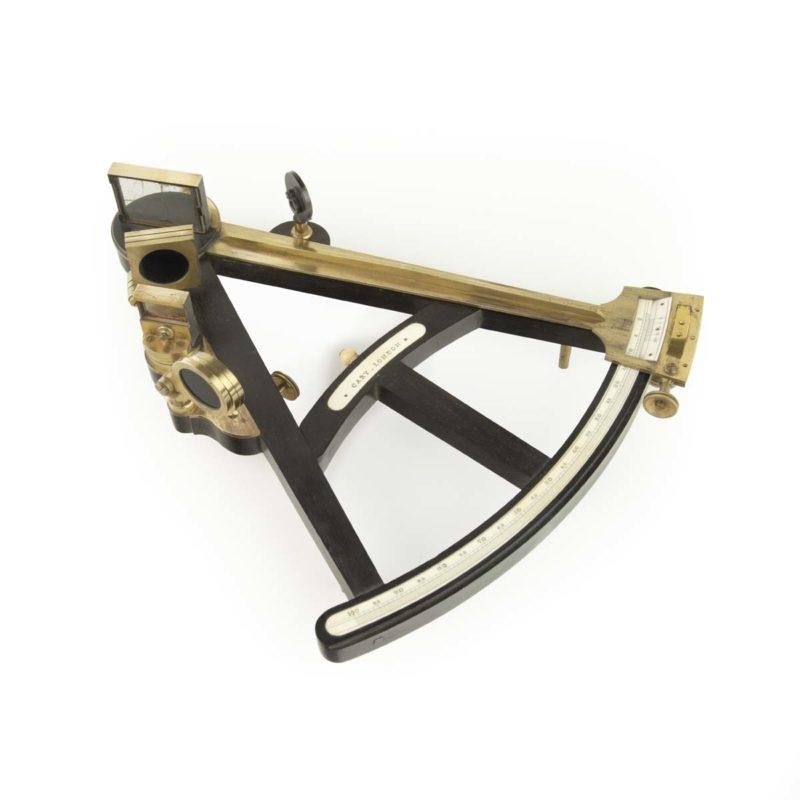
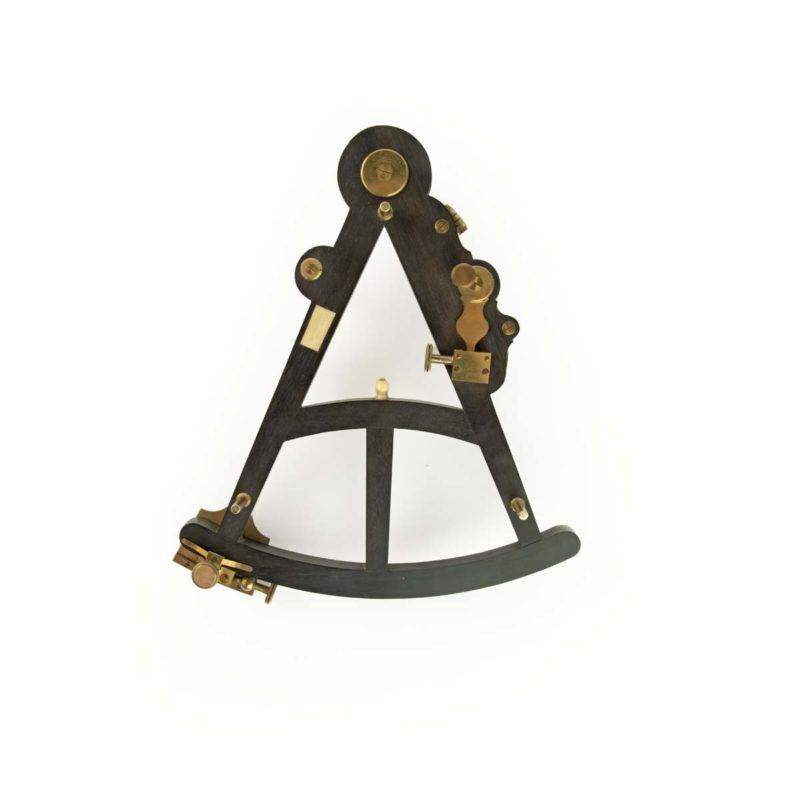
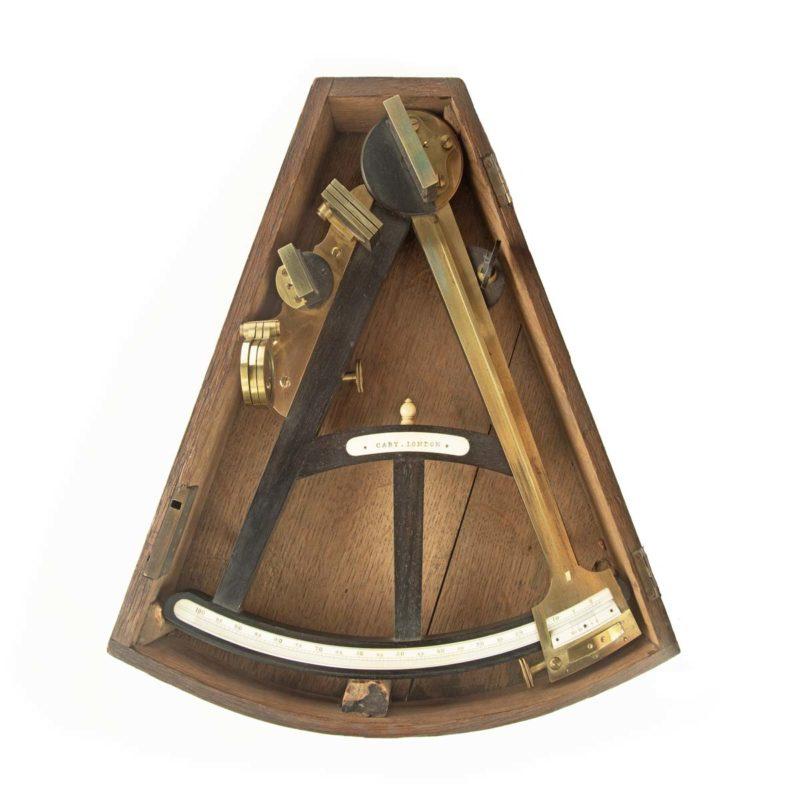
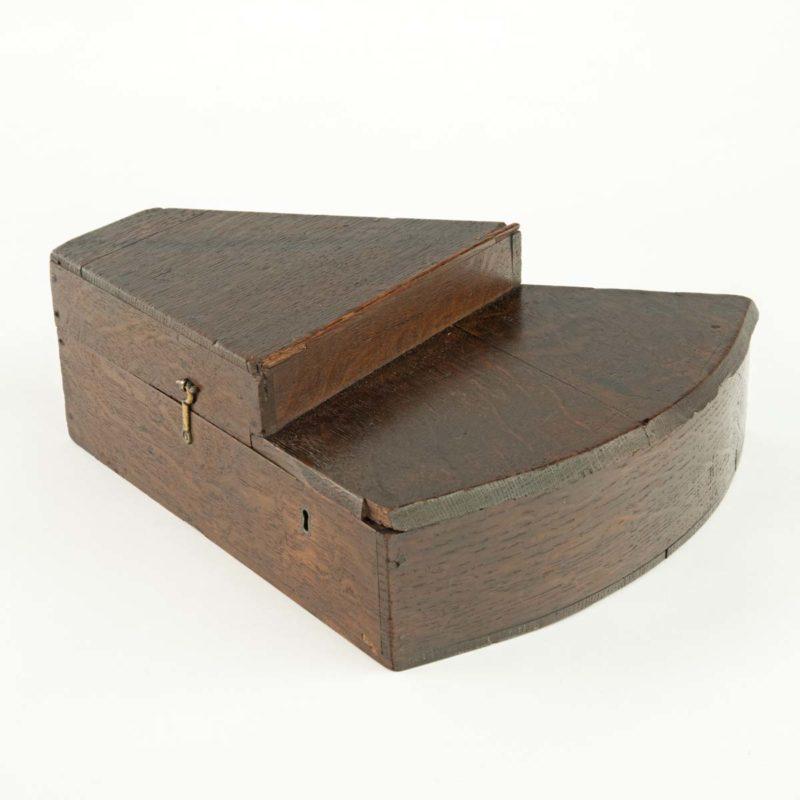
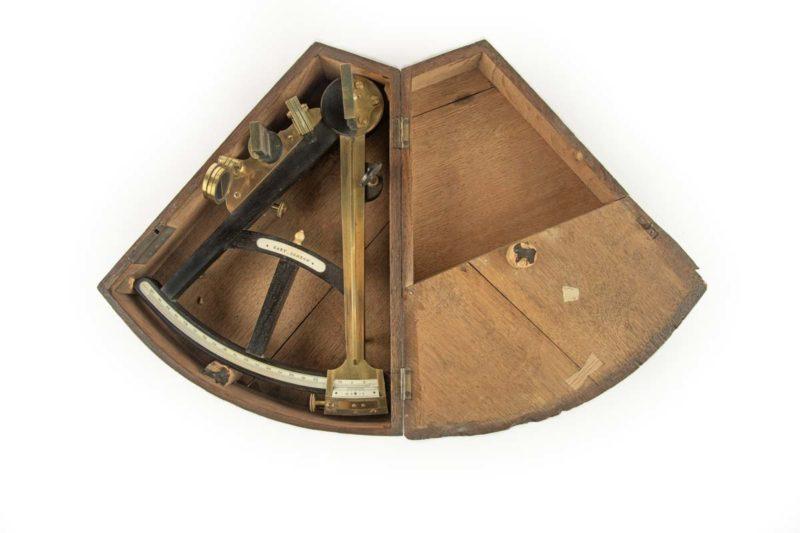
This object is eligible for a Certificate of BADA Provenance
The BADA Standard
- Since 1918, BADA has been the leading association for the antiques and fine art trade
- Members are elected for their knowledge, integrity and quality of stock
- Our clients are protected by BADA’s code of conduct
- Our dealers’ membership is reviewed and renewed annually
- Bada.org is a non-profit site: clients deal directly with members and they pay no hidden fees
A late Georgian octant by Cary, London,
This octant has an ebony frame and limb with a brass indexing arm and fittings. The inset bone scale is marked to 100 degrees and the nameplate ‘Cary London’. There is a small turned finial which unscrews to become a pencil. It is housed within its original oak case. English, circa 1820.
Octant height: 12in (30cm) Width: 9¾ in (24.5cm)
Box height: 12½ in (32cm) Width: 11½ in(29cm) £2,800
Isaac Newton invented the reflecting quadrant around 1699 and he gave a detailed description to Edmond Halley, but this was not published until after Halley’s death in 1742. Octants, quadrants and sextants are closely related and measure the angle between objects. They can be used vertically, such as to find the angle between the horizon and the sun, which determines latitude or they can be used horizontally to determine distance from the shore.
Dimensions
Dimensions: Octant height: 12 inches (30cm) Width: 9¾ inches (24.5cm) Box height: 12½ inches (32cm) Width: 11½ inches (29cm)The BADA Standard
- Since 1918, BADA has been the leading association for the antiques and fine art trade
- Members are elected for their knowledge, integrity and quality of stock
- Our clients are protected by BADA’s code of conduct
- Our dealers’ membership is reviewed and renewed annually
- Bada.org is a non-profit site: clients deal directly with members and they pay no hidden fees


